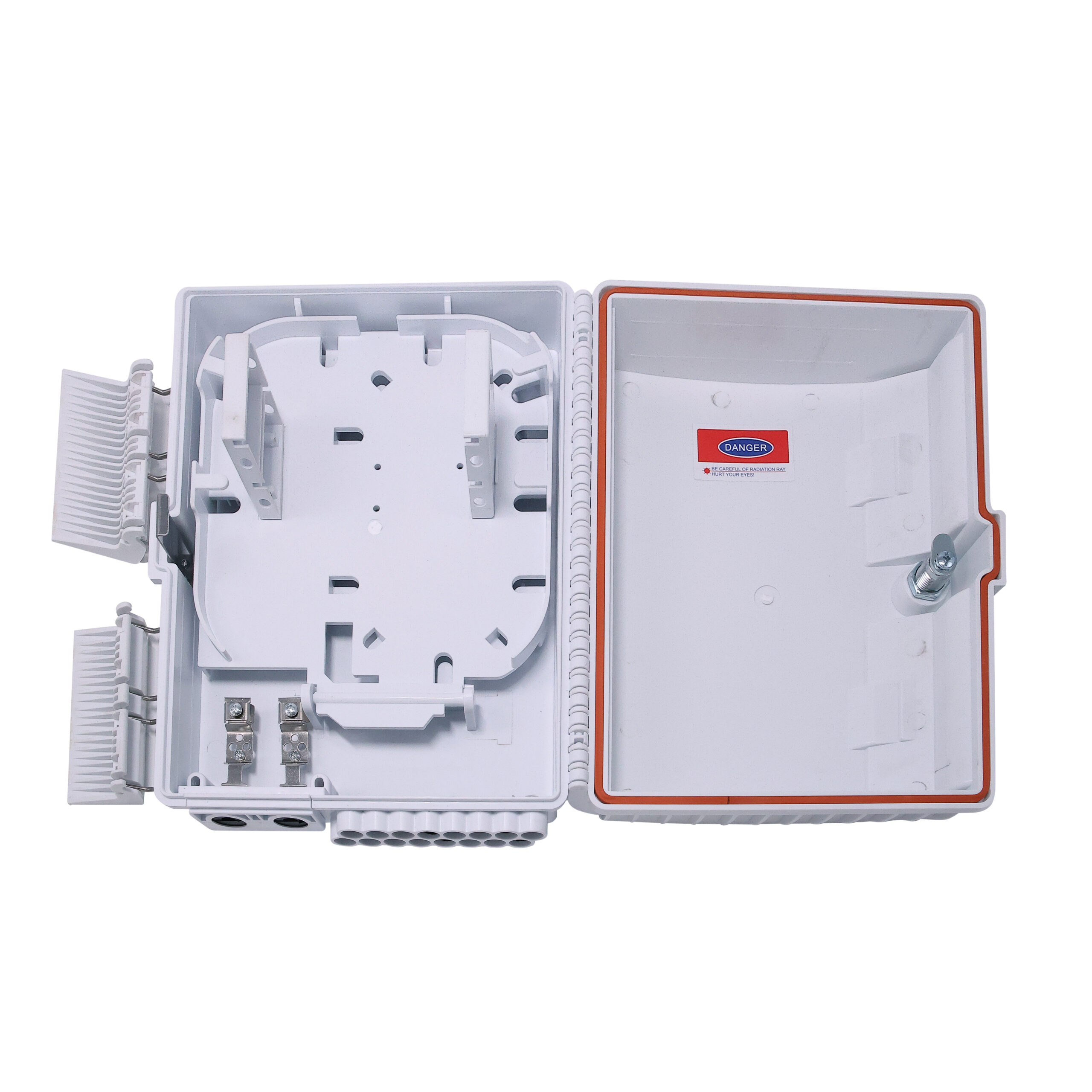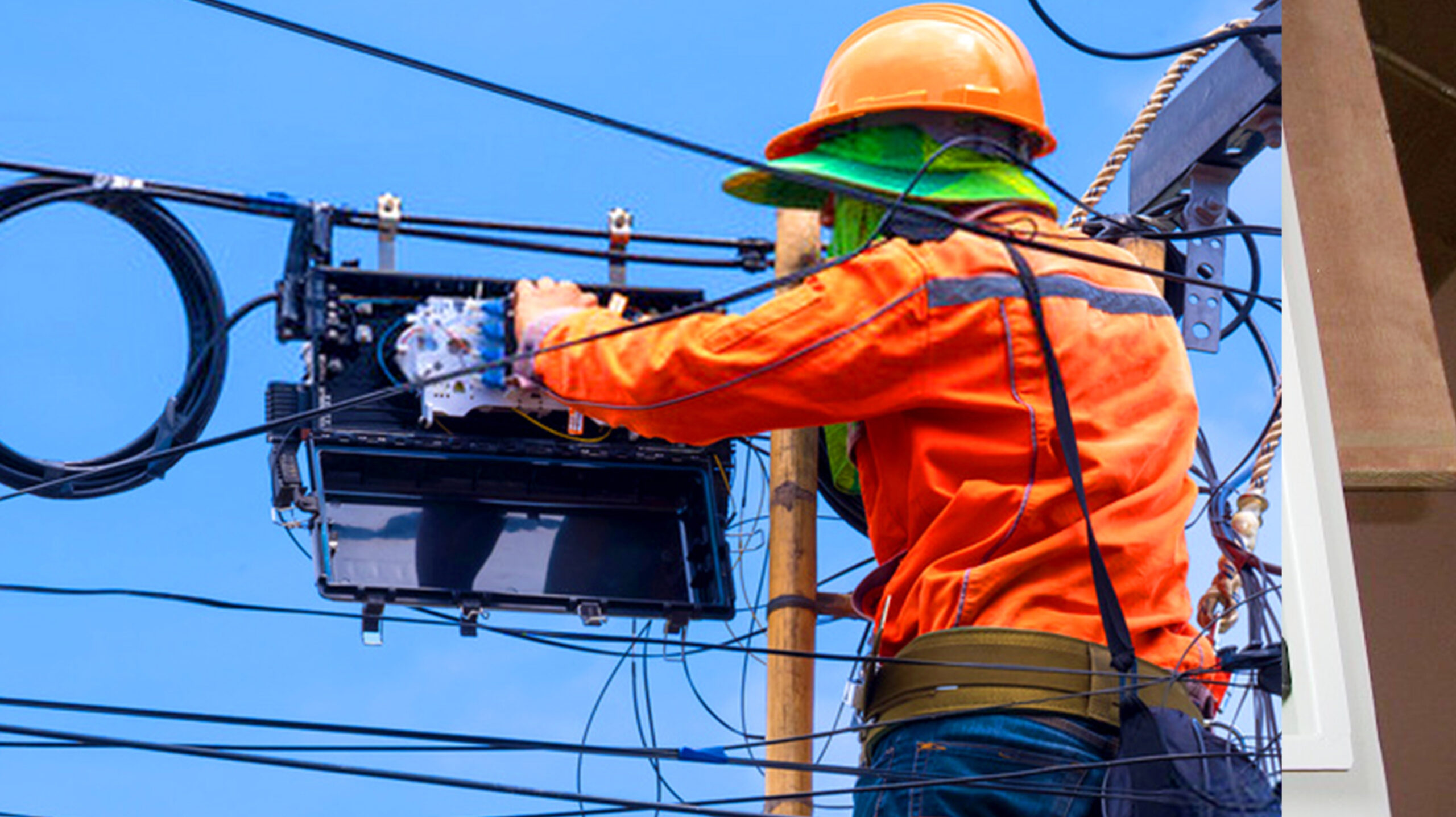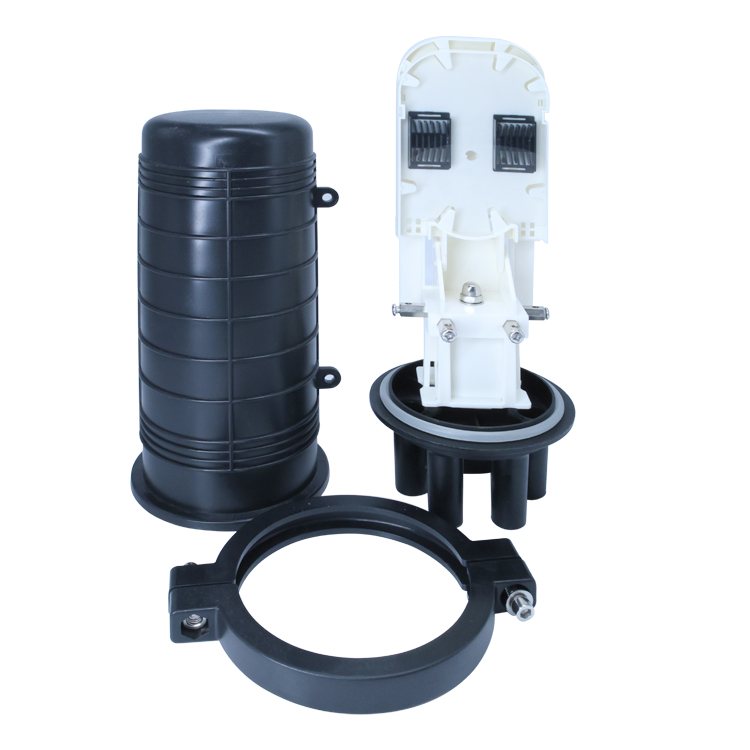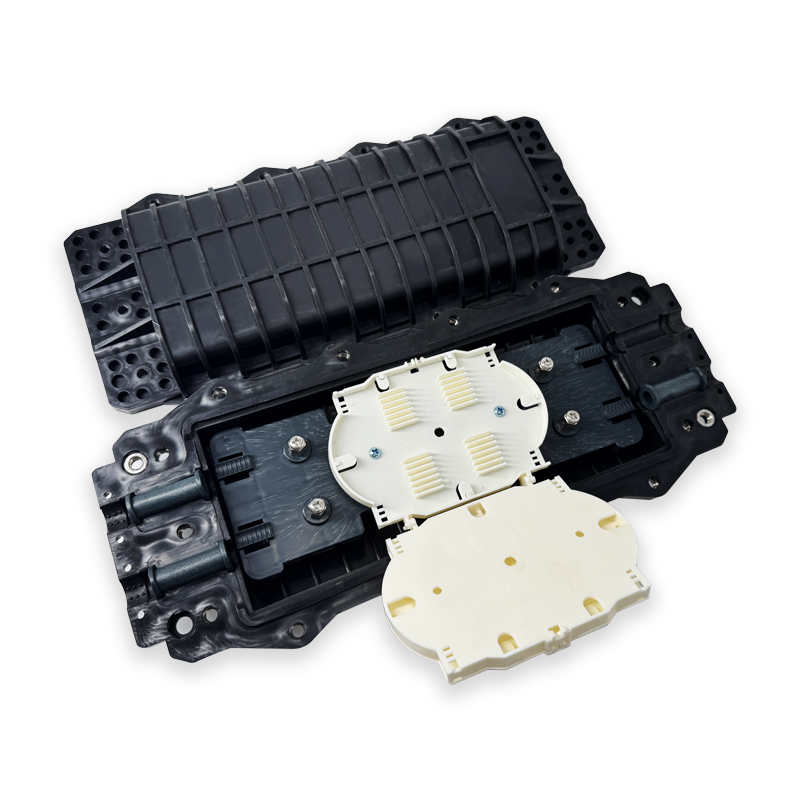In the intricate web of modern connectivity, fiber optic networks power seamless data transmission across cities, enterprises, and homes. At the heart of these networks lie two critical components: the fiber optic termination box and the fiber optic splicing box. Each serves distinct yet complementary roles in ensuring robust signal delivery, whether for a 1 km FTTH (Fiber to the Home) deployment or a 100 km telecom backbone. This guide explores the differences, functionalities, and applications of these boxes, offering insights into their installation, benefits, and challenges. With Dekam Fiber’s cutting-edge solutions, you’ll discover how to choose the right equipment for your network needs. Let’s unravel the complexities of these essential tools and empower your connectivity with Dekam Fiber.
Understanding Fiber Optic Termination and Splicing Boxes
Fiber optic termination boxes and splicing boxes are pivotal in managing optical cables, but their purposes diverge significantly. A hộp kết thúc sợi quang, often called an optical distribution frame (ODF) or fiber patch panel, serves as the endpoint where incoming fibers connect to devices or patch cords. It facilitates termination, protection, and organization of fiber connections, typically at the user end, such as in FTTH setups or data centers. For instance, a termination box might link a 500m drop cable to an ONU (Optical Network Unit) with minimal signal loss, around 0.2 dB per connection.

Conversely, a fiber optic splicing box, also known as a splice closure, is designed to join two fiber optic cables, creating a continuous light path for extended networks or repairs. It houses splices—either fusion or mechanical—ensuring low attenuation (e.g., 0.05 dB for fusion splices) and environmental protection. Splicing boxes are common in long-haul telecom or backbone networks, such as a 50 km link requiring multiple splices to maintain a 15 dB loss budget for 25G signals.

Both boxes share common goals: fiber fixation, splicing support, signal integrity, and compliance with minimum bend radius standards (e.g., 30 mm for G.657 fibers). However, their applications, design, and deployment scenarios differ, making the choice between them critical for network efficiency. Dekam Fiber offers tailored solutions for both, ensuring seamless integration into diverse projects, from urban FTTH to rural broadband expansions.
As of 2025, the fiber optic market is booming, driven by 5G, IoT, and cloud computing demands. The global fiber termination equipment market is expected to grow at a CAGR of 9.8% through 2030, reflecting the rising need for reliable connectivity. Dekam Fiber aligns with these trends, offering AI-enhanced tools and eco-friendly materials that reduce installation time by 25% and enhance durability in harsh environments.
Key Functions and Applications
Fiber Optic Termination Box
A termination box is the final hub where fibers meet end-user equipment or patch panels. Its primary functions include:
- Termination: Secures fiber ends with connectors (e.g., SC, LC) for device connectivity, achieving losses as low as 0.2 dB.
- Protection: Shields connections from dust, moisture, and mechanical stress, often with IP65-rated enclosures.
- Cable Management: Organizes fibers with trays and adapters, ensuring bend radius compliance and easy access for maintenance.
- Connectivity: Supports flexible patching, allowing reconfiguration without disrupting the network.
Ứng dụng: Termination boxes shine in FTTH deployments, data centers, and enterprise networks. For example, a 12-port termination box in a residential building connects drop cables to ONUs, supporting gigabit internet for multiple households. They are typically wall- or rack-mounted, with port counts ranging from 4 to 48, catering to small businesses or large data centers.
Dekam Fiber’s termination boxes, offer modular designs with capacities from 8 to 96 ports, supporting SC/APC and LC/UPC connectors. Their compact, IP66-rated shells ensure reliability in outdoor or indoor settings, reducing maintenance costs by 15% over standard models.
Fiber Optic Splicing Box
A splicing box is engineered to protect and organize spliced fiber joints, ensuring continuity across extended cable runs. Its key functions include:
- Splicing: Houses fusion or mechanical splices, with fusion achieving losses as low as 0.03 dB, ideal for long-distance links.
- Bảo vệ môi trường: Uses IP68-rated enclosures to shield splices from water, dust, and temperature extremes (-40°C to 85°C).
- Fiber Organization: Provides trays for coiling excess fiber, maintaining bend radius and simplifying future repairs.
- Scalability: Supports multiple splices (e.g., 12 to 144 cores), accommodating network growth.
Ứng dụng: Splicing boxes are critical in long-haul telecom, backbone networks, and repairs. For instance, a splicing box might join two 40 km cables in a regional network, preserving signal strength for 100G transmission. They are often pole- or manhole-mounted in outdoor settings.
Dekam Fiber’s splicing boxes, support up to 288 splices with heat-shrink or mechanical sleeves, featuring UV-resistant materials and quick-access designs that cut installation time by 20%.

Fusion Splicing vs. Termination in Boxes: A Detailed Comparison
While both boxes support splicing, their primary roles differ. Termination boxes often include pre-installed connectors for quick device connections, whereas splicing boxes focus on joining cables for continuity. To clarify, here’s a comprehensive comparison table:
| Diện mạo | Fiber Optic Termination Box | Fiber Optic Splicing Box |
|---|---|---|
| Primary Function | Terminates fibers to connectors for device connectivity | Joins two cables via splices for network extension |
| Signal Loss | 0.2-0.3 dB per connector | 0.03-0.15 dB per splice (fusion/mechanical) |
| Độ bền | Moderate; connectors may wear with frequent patching | High; splices are permanent, weather-resistant |
| Installation Time | 5-10 min per connection (pre-terminated options faster) | 10-15 min per fusion splice, 5-7 min mechanical |
| Trị giá | $50-$200 (box) + $2-$5 per connector | $20-$100 (box) + $0.10-$0.50 per splice sleeve |
| Thiết bị cần thiết | Connectors, adapters, patch cords, cleaver | Splicer, cleaver, sleeves, OTDR |
| Ứng dụng | FTTH, data centers, enterprise networks | Long-haul telecom, backbone networks, repairs |
| Mounting | Wall, rack, or desktop | Pole, manhole, or underground |
| Port/Splice Capacity | 4-96 ports | 12-288 splices |
| Ưu điểm | Flexible reconfiguration, quick setup | Low loss, permanent, scalable |
| Nhược điểm | Higher loss, connector wear over time | Requires skilled labor, longer setup |
| Environmental Rating | IP65-IP66 (indoor/outdoor) | IP67-IP68 (outdoor focus) |
This table highlights termination boxes’ flexibility for user-end applications and splicing boxes’ robustness for infrastructure. Dekam Fiber’s solutions bridge both, offering hybrid boxes for mixed use in complex networks.
Installation Steps for Termination and Splicing Boxes
Installing a Fiber Optic Termination Box
- Mounting: Secure the box (e.g., Dekam TermiCore) on a wall or 19” rack using provided brackets. Ensure alignment for cable entry, taking 5-10 minutes.
- Cable Preparation: Strip 2-3 cm of the cable jacket using a Dekam stripper, exposing the 125 μm fiber core. Clean with alcohol pads to avoid contamination.
- Termination: Attach connectors (e.g., SC/APC) to fibers using a cleaver for precise cuts. Insert into adapters within the box, ensuring <0.25 dB loss per connection (10-15 minutes for 12 ports).
- Cable Management: Coil excess fiber in trays, maintaining a 30 mm bend radius. Secure with ties to prevent strain, adding 5 minutes.
- Testing: Use Dekam OTDR to verify connections, targeting <0.3 dB loss per port. Document results for compliance, taking 10 minutes for a 24-port box.
Total time: 30-40 minutes for a 12-port setup. Dekam’s pre-terminated boxes reduce this by 50%, ideal for rapid FTTH deployments.
Installing a Fiber Optic Splicing Box
- Mounting: Install the box on a pole or in a manhole using weatherproof mounts, ensuring IP68 sealing (5-10 minutes).
- Cable Preparation: Strip 1.5 cm of cable jacket and buffer, clean fibers, and cleave at a 0.4° angle using Dekam tools, taking 5 minutes per cable.
- Splicing: Perform fusion splices with a Dekam splicer (0.06 dB loss, 12 minutes per splice) or mechanical splices (0.15 dB, 5 minutes). Protect with sleeves, shrinking in 25 seconds.
- Fiber Organization: Place splices in trays, coil excess fiber, and seal the enclosure to prevent moisture ingress, adding 10 minutes.
- Testing: Verify with an OTDR, ensuring <0.08 dB per splice. Log results for network audits, taking 10-15 minutes for 12 splices.
Total time: 45-60 minutes for 12 splices. Dekam’s AI-enhanced splicers streamline alignment, cutting time by 20%.

Challenges and Solutions
Termination Box Challenges:
- Connector Wear: Frequent patching can degrade connectors, increasing loss by 0.1 dB over time. Solution: Dekam’s durable LC/UPC connectors extend lifespan by 30%.
- Space Constraints: Compact setups risk bend radius violations. Dekam’s modular trays ensure compliance in tight spaces.
- Trị giá: High port-count boxes ($200+) strain budgets. Dekam offers scalable 4-96 port options, starting at $50.
Splicing Box Challenges:
- Environmental Exposure: Harsh conditions (e.g., -20°C) affect splice integrity. Dekam’s IP68 closures withstand extreme weather.
- Skill Requirements: Fusion splicing demands expertise; novice errors yield 0.4 dB losses. Dekam’s training programs enhance proficiency.
- Equipment Cost: Splicers deter small teams. Dekam’s leasing plans lower entry barriers.
Emerging 2025 challenges include supply chain delays for high-capacity boxes and AI integration complexities. Dekam mitigates these with local manufacturing and user-friendly software updates.
Cost Considerations
Termination boxes range from $50 (4 ports) to $200 (48 ports), with connectors at $2-$5 each. A 24-port setup costs ~$150, including labor (~$0.20/m for 500m). Splicing boxes cost $20-$100, with sleeves at $0.15 and fusion splicers at $1500, totaling ~$0.30/m for a 10 km link. Dekam’s bundled kits save 15-20%, and our eco-friendly materials align with 2025 sustainability trends, reducing long-term costs by 10%.
Conclusion: Choose Dekam Fiber for Optimal Connectivity
Fiber optic termination and splicing boxes are the cornerstones of reliable networks, each excelling in distinct roles. Termination boxes offer flexibility for user-end connections, while splicing boxes ensure low-loss continuity for infrastructure. Whether building a 1 km FTTH network or a 100 km backbone, trust Dekam Fiber to power your connections with precision and innovation.




